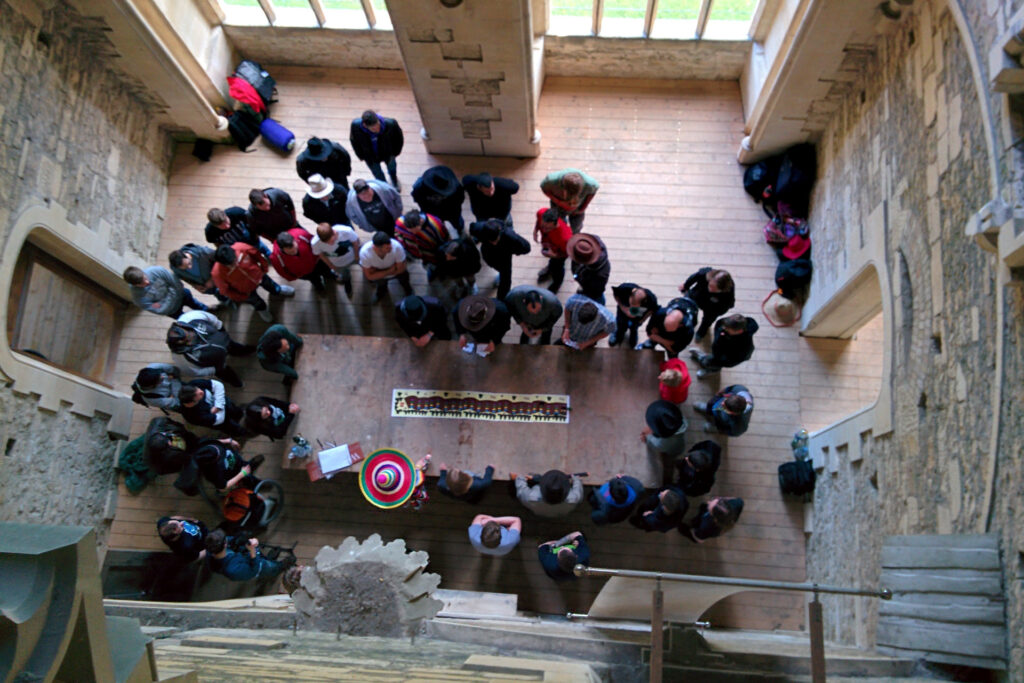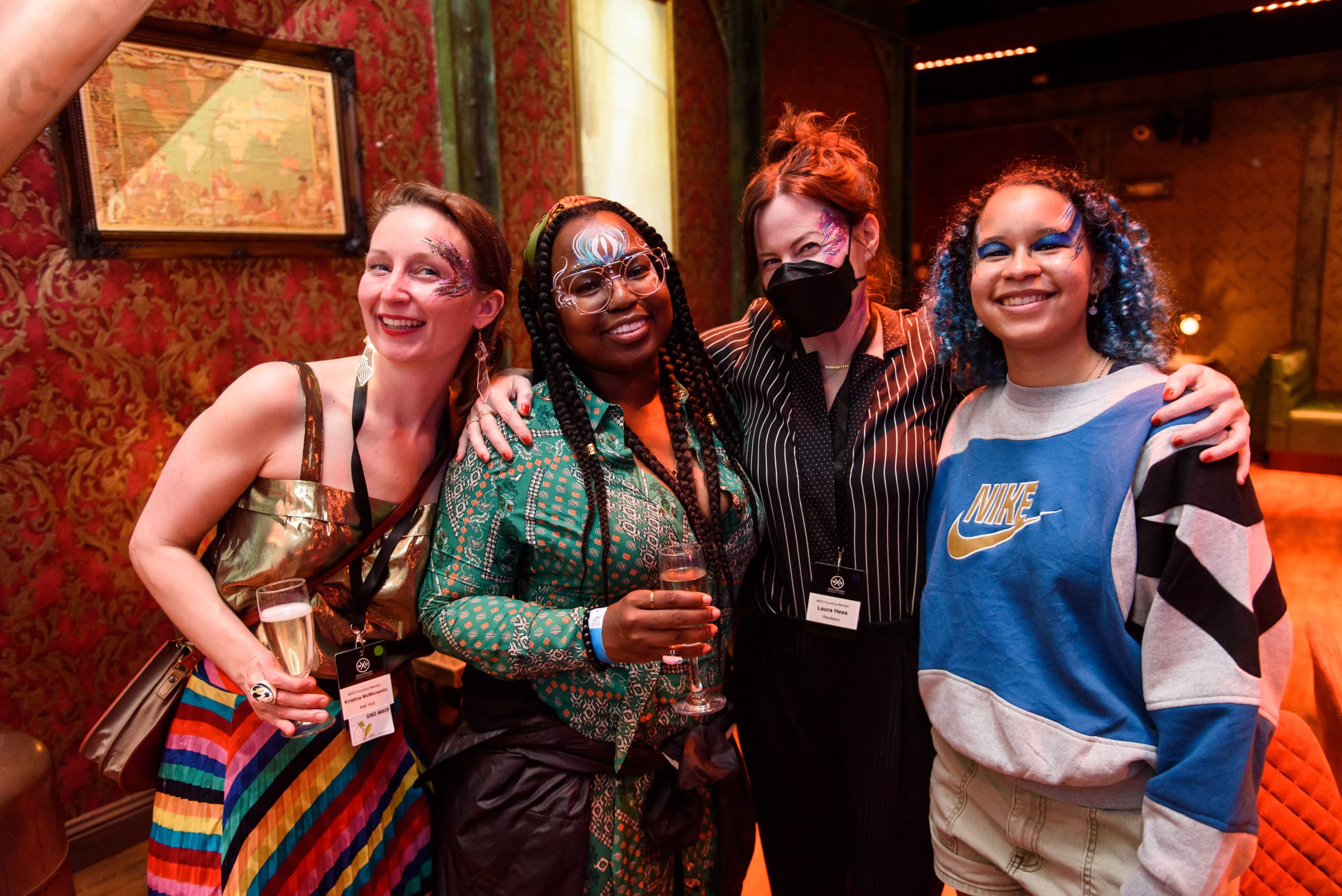Kerrie Fraser handles Operations at chronyko, which uses a unique combination of storytelling, technology and puzzles to create immersive learning activities and events. She explains how building an immersive learning framework can help create more engaging, memorable and rich experiences.
Immersive Learning uses narrative-based concepts to drive engagement and facilitate learning.
That’s it. No fancy tech (unless you want it). No elaborate equipment. Just developing skills or acquiring knowledge within the context of a scenario.
That scenario might be related to the learning objective (like teaching cybersecurity through a simulated ransomware attack) or completely unconnected (like teaching health and safety procedures in a dystopian future).
What is immersive learning for?

Typically, this technique is used to teach and improve core business skills (also known as soft or key skills) such as communication, collaboration, critical thinking and creativity. Skills that are often overlooked but are absolutely essential in solving complex business challenges and cultivating an environment for innovation.
But immersive learning can also be used to successfully teach more specific skills (including cybersecurity skills) and for creating awareness and understanding around specific topics.
The great thing is that immersive learning is a technique that can be applied to teach almost anything to anyone. It’s literally limitless.
How can I create an immersive learning activity?
From simple text or verbal scenarios to elaborate multi-day LARP style events, what’s important is that the concept is interesting enough to engage learners in the task. The more complex and unrestricted the scenario, the more learning opportunities it can support.
Storytelling = Engagement

It’s more than just a story. It’s all about building a multi-dimensional world. The richer the world, the more participants will engage with that world and consequently the learning. There are an almost infinite number of ways you can add layers to your world. The more immersive and interactive you can make these, the more believable and effective it will be.
Lay the entire story out for them to discover, rather than drip feeding them the chapters.
Yes, there will be some elements that require a little participant imagination or suspending their disbelief, particularly if the concept is dystopian or historical for example, but the key is providing a rich world with enough depth to keep participants fully immersed and engaged in the concept.
Although there should be a clear objective set out for participants, the world itself should be non-linear. If you give participants the freedom to explore that world, they will be much more engaged than if they are just following a prescribed narrative.
Of course, there will need to be some structure to the storyline, but these should be about guiding participants through their journey, rather than creating rigid boundaries.
Whatever the concept, to allow the learning to be relevant in the real-world, the execution should be as close to real-life as possible.
In real life, complex decisions are rarely answered by a simple yes/no, left/right, this/that. There are always many more factors that can affect a decision, so the immersive framework should reflect this. It should be designed so that the journey can be personal to each participant.
Having an element of realism in your scenario will ensure that participants maintain a semblance of their own moral compass and keep to ethical methods. It’s all about winning the right way.
Characters

Create characters to populate the concept and drive the narrative. If budget allows, use improv actors to bring these characters to life. Real-life characters that can be interacted with go a huge way to adding immersion to any learning activity, even if it’s remote interaction — Zoom, Slack, Messenger, even text or email!
There doesn’t need to be vast amounts of characters – in fact there probably shouldn’t be – but they should have sufficient depth.
If a character has a job/business, they should at the very least have a relevant job spec they can draw from. Maybe give them some social media profiles and some business cards. Create a website for their business.
These little details may never even be revealed, but if participants do go digging (which should be encouraged and is an essential component to developing strong critical thinking skills), then having this realistic portfolio of information rather than just a void will contribute to the realism, enhance immersion and therefore boost engagement with the learning.
It also creates fantastic talking points amongst participants (“Did you see that Mrs X checked in at the restaurant on Facebook on the night of the murder?!”)
Be prepared for the unexpected

Once you set the expectation that the world is limitless, you need to be prepared for participants to test the boundaries.
In my experience, participants will always find something or ask something you didn’t expect. That’s why it’s essential to create those elaborate backstories, not only for individual characters but for the wider concept.
For example, if the concept revolves around a radical political group then everyone involved in the development, production and delivery of the activity/event will need to understand what the precursors were that led to the creation of this group and the activities it is involved in, along with the histories and motivations of the members involved.
Consistency is key. If participants find any discrepancies or holes in the concept, the whole immersive world will begin to fall away.
However, if you achieve all this successfully, not only are you creating an ideal foundation for participants to develop and improve their skills (and after all, isn’t that the point) but you are also creating experiences that are unique for every participant that takes part, providing alternative areas for discussion on the shared experience which can enrich and further the elements of peer-to-peer learning even after the activity or event has concluded.
Technology
This will depend largely on the target audience and the delivery method.
For example, during a global pandemic, it is highly likely that the delivery of any immersive learning experience will need to be conducted completely remotely. Therefore technology of some description will be a must.
However, in ‘normal’ times, it might not be appropriate to include any tech at all. Perhaps using tech will be detrimental to your deserted island or medieval theme. In this case, you’ll need to get even more creative!
It’s always important to ensure that any technology incorporated complements the activities and facilitates the learning and is not just included as a gimmick. If a participant needs to waste valuable time trying to understand how to work a piece of tech, unless that is the skill you are intending to teach, it is likely to lead to frustration and be detracting rather than adding to the overall experience.
It’s particularly important that all essential information, such as instructions, objectives and conclusions, are completely and easily accessible to all participants.
However, if it is technology-based skills, such as cybersecurity, that you are teaching, you might deliberately want to include some complicated technology elements that you know only a few will be able to engage with. If you do this in the right way, you can use it as an opportunity to facilitate peer-to-peer learning.
Learning that there is no shame in asking to be shown how to achieve something and, conversely, learning how to effectively communicate to someone else how to achieve something, are both hugely valuable skills. Skills that are very often overlooked when we live in a culture where if you don’t know how to do something, you simply Google it or watch a YouTube tutorial rather than asking someone to show us.
Puzzles

This is where the real learning opportunities are. Your puzzles, challenges, missions — whatever it is you want to call them, they are the content of your event/activity and therefore need to satisfy the learning objectives for your event.
Typically you’ll want to create more puzzles than the participants can possibly achieve in the allotted time. Doing this will:
- Allow you to create content that caters for all levels, abilities and skillsets.
- Overwhelm participants, thereby forcing them to create and execute an effective strategy as a team.
- Allow participants to play to their strengths or provide the opportunity to explore something completely new.
- Facilitate leaders within the group. The more complex, the more there will be the need for participants to assume roles and responsibilities.
- Make communication absolutely necessary. By making it impossible for one person or a small group to complete the task in isolation, everyone will need to pull together in order to achieve success.
Just like with the storyline, try not to make things linear. It’s ok for the answers of some of the puzzles to be required in order to solve later puzzles, but don’t design puzzles so that they deliberately flow directly into each other.
Having a prescriptive and rigid flow not only makes for a boring participant experience but also significantly reduces the opportunity for indirect skills development.
If participants have the freedom to discover and solve puzzles and challenges in any order they will need to collectively reflect on objectives, strategize, communicate this strategy, prioritise, designate tasks and really work together as a team.
This freedom to complete the objective in their own way will lead to much higher levels of engagement (therefore more learning outcomes realised) and greater satisfaction on completion (meaning they will find it easier to recall what they have learned in the future). Win-win!
Why do we need immersion?

Using immersion as a framework for learning doesn’t just make it fun. There’s a whole host of other reasons that make this scenario-based immersive learning more effective than traditional learning methods.
- Higher levels of engagement — participants won’t learn a thing unless they actively engage with the learning. Creating freedom within an immersive world will maximise opportunities for that engagement.
- Builds confidence — everybody is experiencing this new world together.
- It creates a level playing field — real-world hierarchies no longer apply and everyone is given equal opportunities to lead, teach others and succeed. Emerging leaders might even be revealed!
- Participants become emotionally invested which stimulates parts of the brain that are not normally engaged when learning. This boosts engagement, reduces distractions and crucially aids retention of new information.
- Allows opportunity for immediate application of new skills. Learn something, apply it, remember it!
- There are no right or wrong pathways to completion. Infinite possibilities give freedom for creativity and innovative problem solving.
A final thought
Even after all these elements have been carefully crafted and assembled, there is one final thing you simply cannot control or predict. And it’s the thing that makes immersive learning so special.
Participants are the co-creators of their own experience.
This participant influence makes each event unique, but more granular than that, each participant at the same event will have a completely unique experience. They are in control of their own learning journey.
To get more insights from experts in the experience economy like Kerrie – and to be the first to know about our membership programme, events and more – sign up to the WXO community here.






